
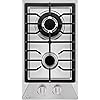
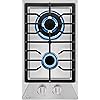
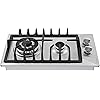
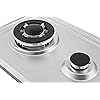
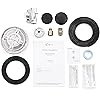
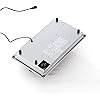
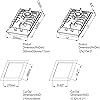
Ready to go? Add this product to your cart and select a plan during checkout. Payment plans are offered through our trusted finance partners Klarna, PayTomorrow, Affirm, Afterpay, Apple Pay, and PayPal. No-credit-needed leasing options through Acima may also be available at checkout.
Learn more about financing & leasing here.
This item is eligible for return within 30 days of receipt
To qualify for a full refund, items must be returned in their original, unused condition. If an item is returned in a used, damaged, or materially different state, you may be granted a partial refund.
To initiate a return, please visit our Returns Center.
View our full returns policy here.
Size: 12x21 Inch
Pattern: Cooktop
Features
Description
The next high-end US & Canada CSA certified gas cooktop by Empava Appliances Inc., it’s the real “secret weapon” behind many great meals. Let this gas operated appliance give you the utmost in cooking flexibility and help you cook like a professional chef in your own home. Still hesitating? Check out the Empava induction cooktop and wall ovens as well!
Brand: Empava
Heating Elements: 2
Color: Black
Power Source: Gas Powered
Fuel Type: Liquid Propane, Gas
Special Feature: CSA Certified
Heater Surface Material: Stainless Steel
Material: Stainless Steel
Product Dimensions: 21"D x 12"W x 4.5"H
Burner type: Gas
Product Dimensions: 21 x 12 x 4.5 inches
Item Weight: 12 pounds
Manufacturer: Empava
Domestic Shipping: Item can be shipped within U.S.
Country of Origin: China
Item model number: 12" Gas Stove Cooktop
Date First Available: April 13, 2019